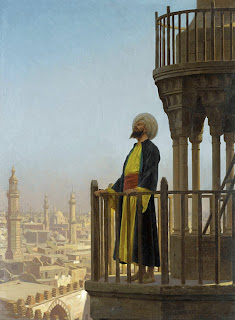Jules Breton: Young Brittany Girl Knitting
As a result of government-sponsored ethnographic studies in the nineteenth century, Brittany, France’s northwestern province, was deemed a rustic, if not entirely archaic, region; its people held firmly to the language, religion and cultural traditions of their sixth century Celtic ancestors. This inspired thongs of travelers curious to experience the uniquely preserved culture firsthand. One such visitor was Jules Breton, who visited Brittany for the fist time in 1865, staying in and around the Baie de Douarnenez, notable for its tuna and sardine fisheries (Annette Bourrut Lacouture, Jules Breton, Painter of Peasant Life, exh. cat., New Haven, 2002, p. 137-139). During his stays, Breton explored the sandy beaches, observing washerwomen and other hard-working peasants, recording their daily tasks in classically inspired arrangements on large canvases. Yet, as demonstrated by the present work, the artist was equally compelled by the darker thickets of Douarnenez, filled with craggy granite rocks, dense patches of moss, and twisted roots. It is this environment of mottled deep greens and shifting tones of brown in which Breton places his
Young Brittany Girl Knitting, wearing the crisp white bonnet and apron emblematic of the regional costume, coupled with a dress made up of three distinct, somber color blocks of deep red-brown, blue and black. Her knitting rests in her lap, temporarily forgotten as her glance is directed to the left, unaware of the viewer’s presence and thus available for close study. The girl’s unselfconscious yet studied pose arose out of Breton’s fascination with the specific physiognomy of Brittany’s women. As he explained “there are those with straight profiles, prominent brows and chins, big lips, powerful square jaws, blue eyes and eyelids slit to the brow; there are the Gallo-Roman type so beloved of Michelangelo. Then there is the gazelle with the supple neck… slanting eyes with pupils set like black diamonds in brilliant white enamels; fine features etched firmly in olive-toned bronze. The first reminded one of the dolmens of the Celtic forest, the others of the harems of the Orient” (Jules Breton, La Vie d’un artiste, Art et Nature, Paris, 1890, p. 300, as quoted in Bourrut Lacouture, pp. 143-144). While Breton is careful to record the knitter’s unique physical characteristics, his portrait does not reduce her to an ethnic stereotype or impersonal genre character. Rather, the artist’s naturalistic handling of paint and intimate composition provide for an individualized expression of youthful beauty. [
Sotheby’s]






































